Hyundai Santa Fe vs Mitsubishi Eclipse Cross – Which car suits you better?
Compare performance, boot capacity, efficiency and price at a glance.
Find out which car is the better choice for you – Hyundai Santa Fe or Mitsubishi Eclipse Cross?
Costs and Efficiency:
Price and efficiency are key factors when choosing a car – and this is often where the real differences emerge.
Mitsubishi Eclipse Cross has a decisively advantage in terms of price – it starts at 36000 £, while the Hyundai Santa Fe costs 51200 £. That’s a price difference of around 15223 £.
Fuel consumption also shows a difference: Hyundai Santa Fe manages with 1.70 L and is therefore somewhat more efficient than the Mitsubishi Eclipse Cross with 2 L. The difference is about 0.30 L per 100 km.
As for range, the Hyundai Santa Fe performs slightly better – achieving up to 54 km, about 9 km more than the Mitsubishi Eclipse Cross.
Engine and Performance:
Power, torque and acceleration say a lot about how a car feels on the road. This is where you see which model delivers more driving dynamics.
When it comes to engine power, the Hyundai Santa Fe has a noticeable edge – offering 253 HP compared to 188 HP. That’s roughly 65 HP more horsepower.
In acceleration from 0 to 100 km/h, the Hyundai Santa Fe is noticeable quicker – completing the sprint in 9 s, while the Mitsubishi Eclipse Cross takes 10.90 s. That’s about 1.90 s faster.
In terms of top speed, the Hyundai Santa Fe performs to a small extent better – reaching 196 km/h, while the Mitsubishi Eclipse Cross tops out at 162 km/h. The difference is around 34 km/h.
Space and Everyday Use:
Beyond pure performance, interior space and usability matter most in daily life. This is where you see which car is more practical and versatile.
Seats: Hyundai Santa Fe offers clearly perceptible more seating capacity – 7 vs 5.
In curb weight, Hyundai Santa Fe is barely noticeable lighter – 1920 kg compared to 1985 kg. The difference is around 65 kg.
In terms of boot space, the Hyundai Santa Fe offers clearly more room – 711 L compared to 359 L. That’s a difference of about 352 L.
In maximum load capacity, the Hyundai Santa Fe performs decisively better – up to 2032 L, which is about 924 L more than the Mitsubishi Eclipse Cross.
When it comes to payload, Hyundai Santa Fe evident takes the win – 665 kg compared to 440 kg. That’s a difference of about 225 kg.
Who wins the race?
The Hyundai Santa Fe proves to be dominates this comparison and therefore becomes our DriveDuel Champion!
Hyundai Santa Fe is the better all-rounder in this comparison.
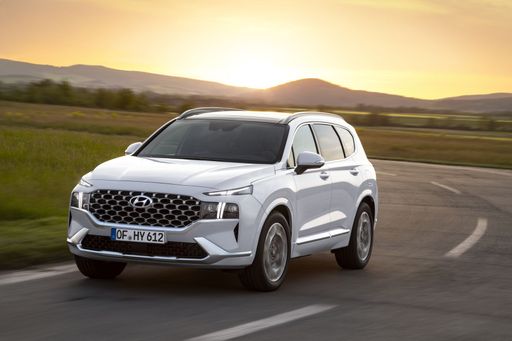
Hyundai Santa Fe
Hyundai Santa Fe
The Hyundai Santa Fe offers a refined blend of style and functionality, making it a strong contender in the SUV market. Its modern interior, combined with advanced technology and comfort features, creates an inviting and practical driving environment. With its sleek design and robust performance, the Santa Fe is well-suited for both urban commutes and family adventures.
details @ hyundai.news
@ hyundai.news
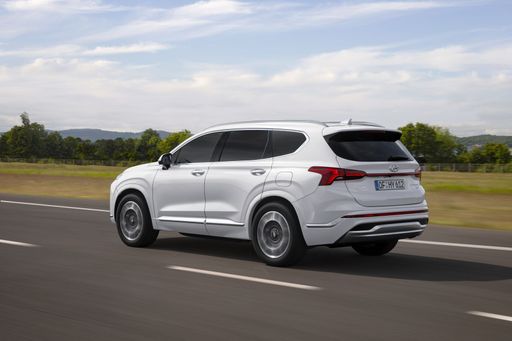 @ hyundai.news
@ hyundai.news
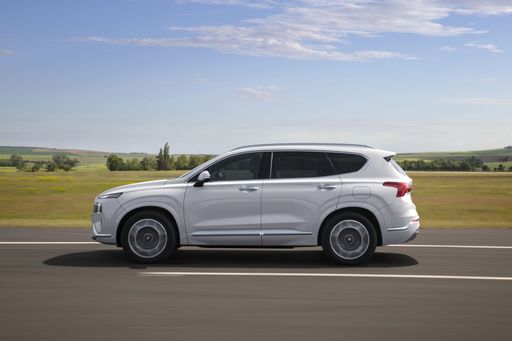 @ hyundai.news
@ hyundai.news
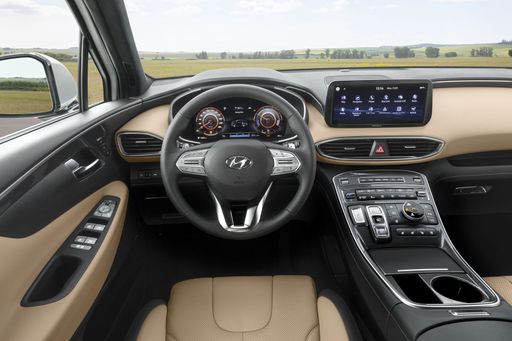 @ hyundai.news
@ hyundai.news
 @ hyundai.news
@ hyundai.news
Mitsubishi Eclipse Cross
The Mitsubishi Eclipse Cross presents a sleek fusion of dynamic design and versatile functionality, perfect for urban adventures and weekend getaways alike. Its elegant lines and bold front grille make a strong statement on the road, while its well-appointed interior offers a comfortable and connected driving experience. With advanced safety features and intuitive technology, the Eclipse Cross ensures drivers feel secure and in control, whether navigating city streets or scenic routes.
details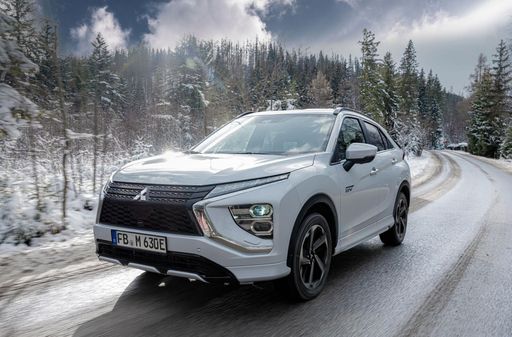 @ Mitsubishi Motos
@ Mitsubishi Motos
 @ Mitsubishi Motos
@ Mitsubishi Motos
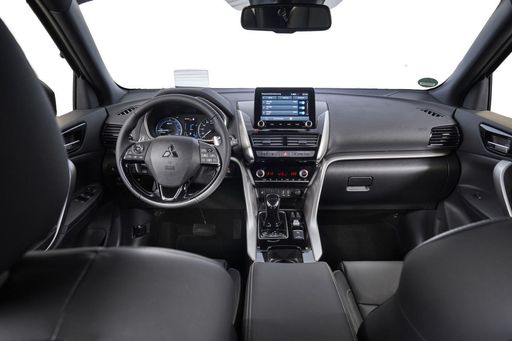 @ Mitsubishi Motos
@ Mitsubishi Motos

|

|
|
|
|
Costs and Consumption |
|
|---|---|
|
Price
51200 - 58400 £
|
Price
36000 - 42000 £
|
|
Consumption L/100km
1.7 - 7.1 L
|
Consumption L/100km
2 L
|
|
Consumption kWh/100km
-
|
Consumption kWh/100km
-
|
|
Electric Range
54 km
|
Electric Range
45 km
|
|
Battery Capacity
-
|
Battery Capacity
-
|
|
co2
38 - 160 g/km
|
co2
46 g/km
|
|
Fuel tank capacity
47 - 67 L
|
Fuel tank capacity
43 L
|
Dimensions and Body |
|
|---|---|
|
Body Type
SUV
|
Body Type
SUV
|
|
Seats
5 - 7
|
Seats
5
|
|
Doors
5
|
Doors
5
|
|
Curb weight
1920 - 2165 kg
|
Curb weight
1985 - 2052 kg
|
|
Trunk capacity
621 - 711 L
|
Trunk capacity
359 L
|
|
Length
4830 mm
|
Length
4545 mm
|
|
Width
1900 mm
|
Width
1805 mm
|
|
Height
1720 mm
|
Height
1685 mm
|
|
Max trunk capacity
1942 - 2032 L
|
Max trunk capacity
1108 L
|
|
Payload
560 - 665 kg
|
Payload
373 - 440 kg
|
Engine and Performance |
|
|---|---|
|
Engine Type
Plugin Hybrid, Full Hybrid
|
Engine Type
Plugin Hybrid
|
|
Transmission
Automatic
|
Transmission
-
|
|
Transmission Detail
Automatic Gearbox
|
Transmission Detail
-
|
|
Drive Type
All-Wheel Drive, Front-Wheel Drive
|
Drive Type
All-Wheel Drive
|
|
Power HP
239 - 253 HP
|
Power HP
188 HP
|
|
Acceleration 0-100km/h
9 - 9.3 s
|
Acceleration 0-100km/h
10.90 s
|
|
Max Speed
180 - 196 km/h
|
Max Speed
162 km/h
|
|
Torque
367 - 380 Nm
|
Torque
-
|
|
Number of Cylinders
4
|
Number of Cylinders
4
|
|
Power kW
176 - 186 kW
|
Power kW
138 kW
|
|
Engine capacity
1598 cm3
|
Engine capacity
2360 cm3
|
General |
|
|---|---|
|
Model Year
2024 - 2025
|
Model Year
2021 - 2022
|
|
CO2 Efficiency Class
B, E, F
|
CO2 Efficiency Class
B
|
|
Brand
Hyundai
|
Brand
Mitsubishi
|
What drivetrain options does the Hyundai Santa Fe have?
Available configurations include All-Wheel Drive or Front-Wheel Drive.
The prices and data displayed are estimates based on German list prices and may vary by country. This information is not legally binding.
